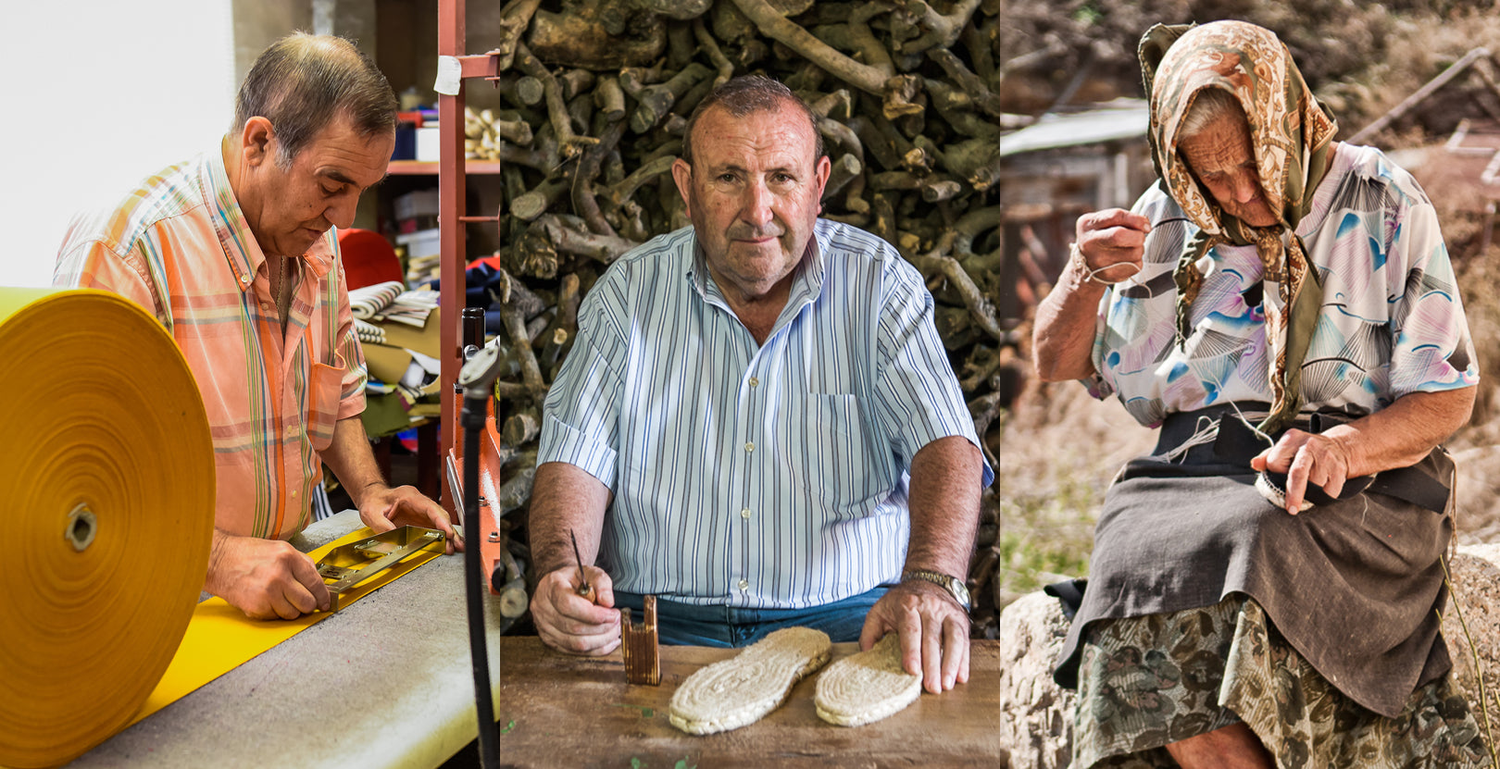How it's made
Watch the Documentary
Discover the village, the artisans, and how each espadrille is hand made one by one, following the tradition. This short documentary shows step by step how the DIEGOS® espadrilles are crafted by hand.
Watch the videoStep 1: Finding the right village
The original and true espadrille has been handcrafted since the 13th century in the villages of southern France and northern Spain. Authentic espadrille-making is an art that has almost disappeared due to globalization. Diego’s family originates from one of the last villages in Spain where our espadrilles are crafted following the centennial tradition.






Step 2: Making the traditional sole rope
José Luis, one of the most endearing characters of the village, is the last traditional rope maker of the region. His old spinning machines from the 1930s bring strands of recycled fibres and jute thread into a braid. His rope is used throughout the region by the sole-makers and is tough enough for shoe soles but soft enough to be comfortable.






Step 3: Handcrafting the sole
Vicente, the sole man, is known for his proficiency and vast knowledge of the espadrille craftsmanship. He curls the braided rope into the typical hourglass shape of an espadrille sole using his hand-operated turntable. Sitting on his alpargatero’s bench, he stitches the sole together using sisal thread and an oversized needle to prevent unraveling.






Step 4: Adding the natural rubber to the sole
In the early days, the soles of the espadrilles were only made of rope. Since the 40s a fine layer of natural rubber has been added to the bottom of the soles to make them more durable. Our soles are heat pressed in a metal mold by melting vulcanized natural rubber onto the rope sole without the use of any glue or chemicals.






Step 5: Weaving the canvas
The cotton canvas is manufactured along the Mediterranean coast of Spain, widely known for the quality and singular beauty of its traditional weaving. This highly complex procedure involves hundreds of dyed colourful threads that are woven together on a loom, creating a beautifully designed canvas, perfectly customized to make the uppers of the espadrilles.






Step 6: The master tailor
All of our espadrilles uppers are cut out and prepared by the skilled master tailor Ramon, known in the village as “el Mateo”. Depending on whether he is working with cotton, leather or silk, he will chose different cutters and calibrate his press according to the material and desired size. This procedure is a core skill of the production of traditional espadrilles.






Step 7: Sewing the espadrilles by hand
The last and most important step is where true magic happens through the skilled hands of the seamstresses of the village. A tradition that has been passed on from mothers to daughters throughout generations and consists of skillfully sewing the fabric onto the rope soles with even stitches and finishing with an embroidery at the front of the shoe.













